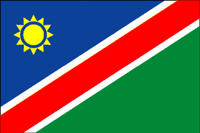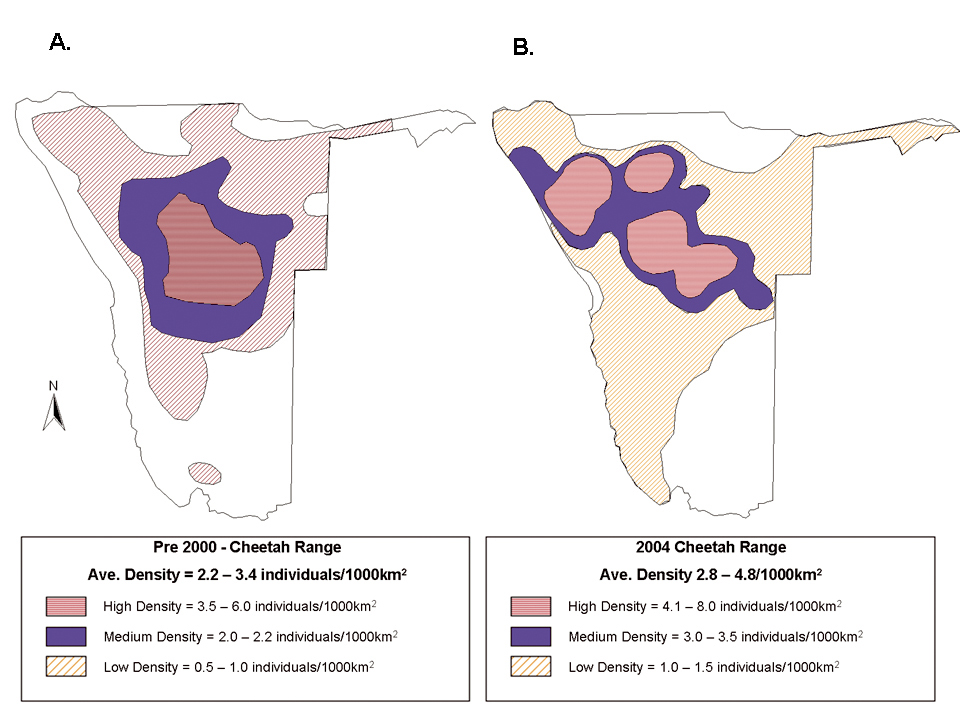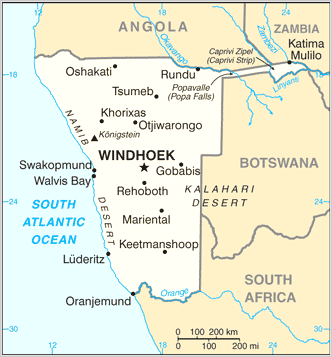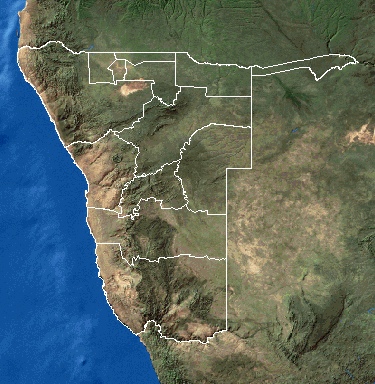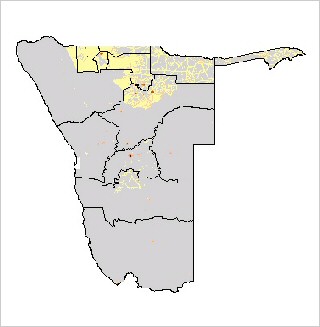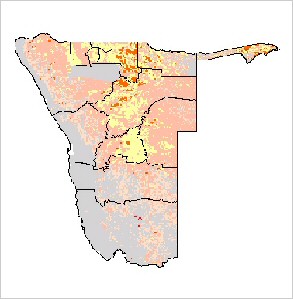|
|
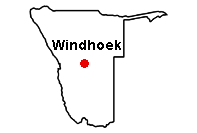 |
| back to top | |
|
Population. Over the past century, wild cheetahs have undergone a drastic reduction in global geographic range and population size, leaving Namibia as one of the remaining strongholds for the species. In Namibia, as anywhere else, it is hard to get accurate data on the population status and trends of cheetah, but some distribution maps are available and information has be derived from interviews, questionnaires and sighting reports. Namibia has a vast network of protected areas, covering over 14% of the country, most of which is desert with low prey density. These protected areas harbour less than 100 cheetahs 5% of the population.However, cheetahs were recorded as being plentiful both in the north-central and southern areas of the country in the early 1900s (Marker-Kraus et al. 1996). Today these areas constitute important livestock farming areas, so this distribution has resulted in intense conflict between local landowners and cheetahs, particularly in the north-central region where the majority of the cheetah population occurs.Most of the large predators such as lions and spotted hyaenas were eradicated from the farmlands by the 1950s. This actually had some benefits for cheetahs, as larger carnivores frequently steal their kills and kill their cubs (Durant 2000; Laurenson 1994), so the farmlands provided an important refuge from these competitors. The threat from other carnivores was replaced with the threat from humans. From 1980 to 1991, 6,818 cheetahs were officially reported to have been removed from the Namibian population. Currently, the general consensus is that the minimum number of cheetahs nationwide is 2000, with an upper boundary in the region of 5000 animals (Stander & Hanssen 2004). Communication with farmers suggests that cheetah populations in Namibia could be increasing, although there is no current data to substantiate this and could be a result of current land use change (Marker et al. 2007). | |
|
|
|
|
Principal Threats. The Namibian cheetah population currently faces a range of threats, with the main ones being changes in habitat and land use and ongoing conflict with humans. The Namibian farmlands are currently undergoing considerable changes, as land tenure rights change and previously large tracts of land are subdivided into new plots for resettled farmers. The ongoing spread of bush encroachment continues to alter the habitat and impact cheetahs through reduced prey availability and a reduction in preferred habitat patches, and it may also contribute towards continued conflict with landowners. Although attitudes appear to be changing slowly, this human-cheetah conflict, particularly the indiscriminate removal of animals not actually causing problems, is still a significant conservation issue for cheetahs on the Namibian farmlands (Marker et al. 2007). |
|
| back to top | |
|
South Africa occupied the German colony of South-West Africa during World War I and administered it as a mandate until after World War II, when it annexed the territory. In 1966 the Marxist South-West Africa People's Organization (SWAPO) guerrilla group launched a war of independence for the area that was soon named Namibia, but it was not until 1988 that South Africa agreed to end its administration in accordance with a UN peace plan for the entire region. Namibia won its independence in 1990 and has been governed by SWAPO since. Hifikepunye POHAMBA was elected president in November 2004 in a landslide victory replacing Sam NUJOMA who led the country during its first 14 years of self rule. | |
|
|
||
|
|
||
|
Area: total: 825,418 sq km; land: 825,418 sq km; water: 0 sq km Climate: desert; hot, dry; rainfall sparse and erratic Terrain: mostly high plateau; Namib Desert along coast; Kalahari Desert in east Land use: arable land: 0.99%; permanent crops: 0.01%; other: 99% (2005) Natural resources: diamonds, copper, uranium, gold, lead, tin, lithium, cadmium, zinc, salt, vanadium, natural gas, fish; suspected deposits of oil, natural gas, coal, iron ore Natural hazards: prolonged periods of drought Environment-current issues: very limited natural fresh water resources; desertification Environment-international agreements: party to: Biodiversity, Climate
Change, Desertification, Endangered Species, Hazardous Wastes, Law of the Sea,
Ozone Layer Protection, Wetlands |
||
|
|
|
|
|
|
|
|
Population: 2,044,147 (July 2006 est.) Age structure: 0-14 years: 38.2% (male 393,878/female 387,147); 15-64 years: 58.1% (male 596,557/female 591,350); 65 years and over: 3.7% (male 34,245/female 40,970) (2006 est.) Median age: total: 20 years; male: 19.8 years; female: 20.1 years (2006 est.) Population growth rate: 0.59% (2006 est.) Infant mortality rate: total: 48.1 deaths/1,000 live births; male: 51.99 deaths/1,000 live births; female: 44.09 deaths/1,000 live births (2006 est.) Life expectancy at birth: total population: 43.39 years; male: 44.46 years; female: 42.29 years (2006 est.) Total fertility rate: 3.06 children born/woman (2006 est.) HIV/AIDS - adult prevalence rate: 21.3% (2003 est.) HIV/AIDS - people living with HIV/AIDS: 210,000 (2003 est.) HIV/AIDS - deaths: 16,000 (2003 est.) |
|
|
Major infectious diseases: food or waterborne diseases: bacterial diarrhea, hepatitis A, and typhoid fever; vectorborne disease: malaria; water contact disease: schistosomiasis (2007) Ethnic groups: black 87.5%, white 6%, mixed 6.5%, note: about 50% of the population belong to the Ovambo tribe and 9% to the Kavangos tribe; other ethnic groups includes Herero 7%, Damara 7%, Nama 5%, Caprivian 4%, Bushmen 3%, Baster 2%, Tswana 0.5% Religions: Christian 80% to 90% (Lutheran 50% at least), indigenous beliefs 10% to 20% Languages: English 7% (official), Afrikaans common language of most of the population and about 60% of the white population, German 32%, indigenous languages 1% (includes Oshivambo, Herero, Nama) Literacy: definition: age 15 and over can read and write; total population: 84%; male: 84.4%; female: 83.7% (2003 est.) |
|
|
|
|
|
Data code: WA Government type: republic Independence: 21 March 1990 (from South African mandate) Legal system: based on Roman-Dutch law and 1990 constitution | |
|
|
|
|
Economy-overview: The economy is heavily dependent on the extraction and processing of minerals for export. Mining accounts for 20% of GDP. Rich alluvial diamond deposits make Namibia a primary source for gem-quality diamonds. Namibia is the fourth-largest exporter of nonfuel minerals in Africa, the world's fifth-largest producer of uranium, and the producer of large quantities of lead, zinc, tin, silver, and tungsten. The mining sector employs only about 3% of the population while about half of the population depends on subsistence agriculture for its livelihood. Namibia normally imports about 50% of its cereal requirements; in drought years food shortages are a major problem in rural areas. A high per capita GDP, relative to the region, hides the world's worst inequality of income distribution. The Namibian economy is closely linked to South Africa with the Namibian dollar pegged one-to-one to the South African rand. Privatization of several enterprises in coming years may stimulate long-run foreign investment. Increased fish production and mining of zinc, copper, uranium, and silver spurred growth in 2003-06. Laber force: 653,000 (2006 est.) Labor force-by occupation: agriculture 49%, industry and commerce 25%, services 5%, government 18%, mining 3% (1994 est.) Unemployment: 5.3% (2006 est.) Population below poverty: the UNDP's 2005 Human Development Report indicated that 34.9% of the population live on $1 per day and 55.8% live on $2 per day | |
|
Industries: meat packing, fish processing, dairy products; mining (diamond, lead, zinc, tin, silver, tungsten, uranium, copper) Agriculture-products: millet, sorghum, peanuts; livestock; fish Exports: $2.321 billion f.o.b. (2006 est.) Exports-commodities: diamonds, copper, gold, zinc, lead, uranium; cattle, processed fish, karakul skins Exports-partners: South Africa 33.4%, US 4% (2004) Imports: $2.456 billion f.o.b. (2006 est.) Imports-commodities: foodstuffs; petroleum products and fuel, machinery and equipment, chemicals Imports-partners: South Africa 85.2%, US (2004) Currency: 1 Namibian dollar (N$) = 100 cents Exchange rates: Namibian dollars per US dollar - 6.7649 (2006), 6.3593 (2005), 6.4597 (2004), 7.5648 (2003), 10.5407 (2002) |
|
|
|
|
|
Telephone system: general assessment: good system; about 6 telephones for each 100 persons; domestic: good urban services; fair rural service; microwave radio relay links major towns; connections to other populated places are by open wire; 100% digital; international: country code - 264; fiber-optic cable to South Africa, microwave radio relay link to Botswana, direct links to other neighboring countries; connected to Africa ONE and South African Far East (SAFE) submarine cables through South Africa; satellite earth stations - 4 Intelsat (2002); note: a fully automated digital network is being implemented Radio broadcast stations: AM 2, FM 39, shortwave 4 (2001) Television broadcast stations: 8 (plus about 20 repeaters) (1997) Internet country code: .na Internet hosts: 3,527 (2006) Internet users: 75,000 (2005) | |
| back to top | |
|
Marker et al. 2007. The Namibian Cheetah: Status Report. Cat News Special Issue 3, 4-13. http://www.cia.gov/cia/publications/factbook/geos/wa.html (last update on 10 January, 2006) http://en.wikipedia.org/wiki/Nambia http://www.lib.utexas.edu/maps/map_sites/country_sites.html#botswana | |
